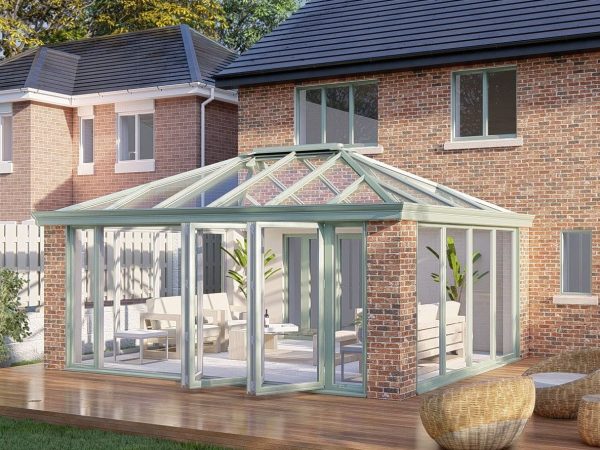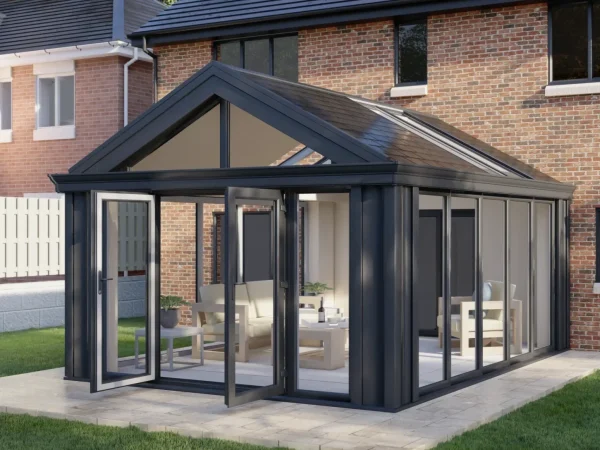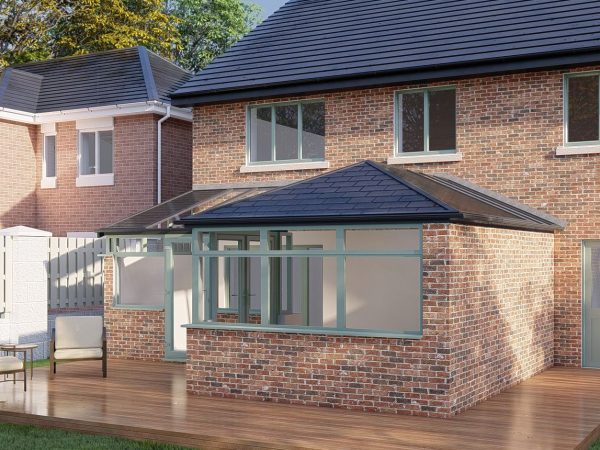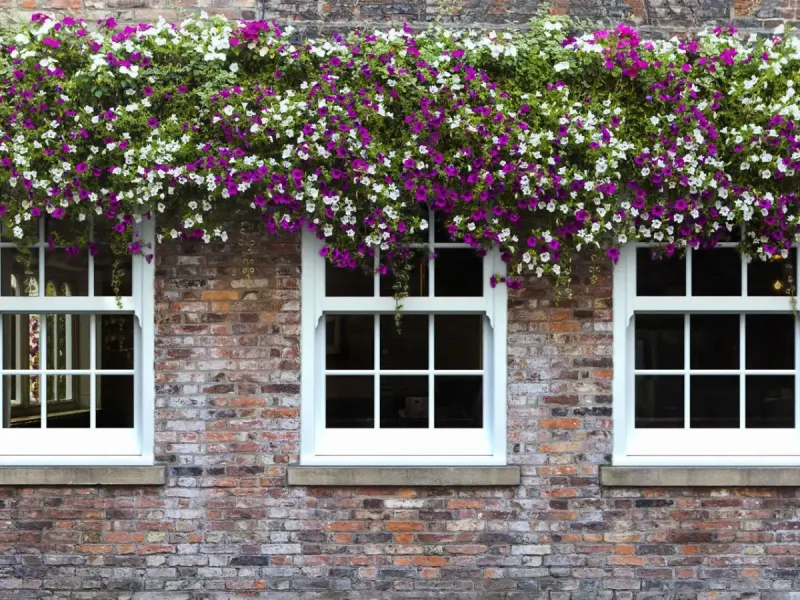What is the BFRC window rating system?
The British Fenestration Rating Council (BFRC) is a trusted independent rating council that verifies the energy performance of UK doors and windows. It’s the most widely-used rating system in the UK, so you might have even seen their rainbow-coloured rating on products before.
What does the BFRC do? They monitor the integrity of the supply chain of windows and doors. Only BFRC-approved manufacturers and installers are allowed to use the official BFRC sticker on the products they sell.
The BFRC also provides windows and doors with an energy rating between A++ and E. There are many things that can affect a product’s energy performance. But this rating measures the energy balance of positive contributions from solar gain minus the negative factors of air leakage and heat loss.
As windows and doors display different A++ to E ratings according to their performance, you can easily compare products and find a suitable option for their home.
When you’re shopping for windows and doors, it’s not clear how your products are going to perform once they’re installed in your home. The BFRC rating aims to make things as simple as possible by providing a standard rating system that everyone can understand.
Look out for the BFRC’s easy-to-read label when browsing for your new windows. You’ll be able to get an idea of the energy efficiency of the complete window (including the frame and glass) at a glance.
Are there other ways to rate windows?
In addition to BFRC, both the British Standards Institute (BSI) and CERTASS have a window rating system.
These systems have labels that look very similar to the BFRC rainbow rating as they also use a colour-coded A to E (or A to G for BSI) rating scale. Different products will be rated by these different bodies, but their ratings are still directly comparable.
An A rated window certified by BFRC will always be more energy efficient than a B rated window by BSI or CERTASS. Likewise, a D rated window according to BSI or CERTASS will correspond to D ratings for BFRC.
So, if your two top window choices are rated by different organisations — don’t fear! Just compare their labels as if they were from the same one.
What is the U-Value?
Thermal performance is measured in terms of heat loss. And when you’re researching products for your home’s construction or renovation, they’ll probably describe their insulative properties with their U-Value.
Taking into account conduction, convection, and radiation, U-Values give a clear, rounded picture of the insulative properties of a material. Essentially, the U-Value is a more precise way to express exactly how much heat is lost through a specific thickness of various materials. Like BFRC window ratings, they’re a handy comparison guide to the benefits of different building components.
Go low!
When comparing U-Values, the important thing to remember is that the lower the U-value, the more effective the material is as a heat insulator. This heat energy lost is expressed as the number of Watts per square metre of the construction (W/m2k). So, the fewer Watts lost, the better it is at keeping the heat in.
As an example, our Solar Elite glass has a U-value rating of 1.0 W/m2k, whereas standard A-rated glass is around 1.2-1.4 W/m2k.
What’s the highest rated window?
As we’ve mentioned, the BFRC Window Energy Rating (WER) ranges from A++ to E.
The highest rated and most energy efficient windows will rank as A++ on the scale. The less energy efficient a window is, the lower it will rank on the scale.
So, while you can be confident that windows rated A – A++ will perform extremely well in your home, you can also know that E rated windows are unlikely to do wonders for your energy bills.
What’s the difference between A+ and A rated windows
It’s simple. A++ windows are higher performing than A+ rated windows, and A+ rated windows are higher performing than A rated windows.
Still, as all these A rated windows are at the top end of the WER scale, they are all good options if you’re looking to maximise your energy efficiency.
Is there any point getting C-rated windows?
Long story short — yes, but only sometimes. Though it must be acknowledged that C-rated windows will provide fewer benefits than A or B rated windows, they don’t need to be dismissed completely.
If you’re willing to compromise on energy efficiency to get windows that work with your limited budget, C-rated windows might be the best option for you.
This being said, if you do have some leeway with your budget, we always recommend going for a higher rating. Keep in mind that higher-performing windows will reduce your energy bills to a much greater extent than low-performing ones. So when you invest more in your windows at the outset, you will make this money back over the long-term in the form of savings on your energy bills.
You should also know that it’s now a requirement for all new windows to be C-rated or above. So, while your windows won’t be the lowest of the low on the scale, they will be the least energy efficient that you can legally install.
CTG Windows
Here at CTG quality is everything. We install A-rated windows as standard, so every customer can feel confident in our products. Plus, we also offer Solar Elite glass as an upgrade that can make your windows up to 20% more energy efficient.
Ready to chat through your options? Get in touch with our friendly team today or drop by our Hayle showroom.
When should I replace my conservatory altogether?
While we’ve spoken a lot about upgrades, it’s worth mentioning that in some instances it might be better to replace your old conservatory altogether. Conservatories installed a long time ago (you can ask us about this if you’re unsure) usually have an average life expectancy of just ten years. After this time your old conservatory will probably need so many upgrades that it will be more cost-effective to treat yourself to an entirely new structure that will last for decades.
Glazing technology is much better than it used to be. In addition to modern installation methods, this means that modern conservatories are now designed to last twenty five years or more. Your taste and functionality requirements might have also changed since you installed your old conservatory, but we can build your new one to your exact specifications. Whichever glazing, doors, fascia and roof you want, we can install them as part of your new conservatory.
Your bespoke conservatory will be carefully manufactured by us in our state of the art South West facility. Our high standards mean that your traditional Victorian or modern tiled roof conservatory will last for years to come and perform with excellent thermal efficiency.
Contact us today for your free home appointment and no-obligation quote or visit us in-person at our Hayle showroom.
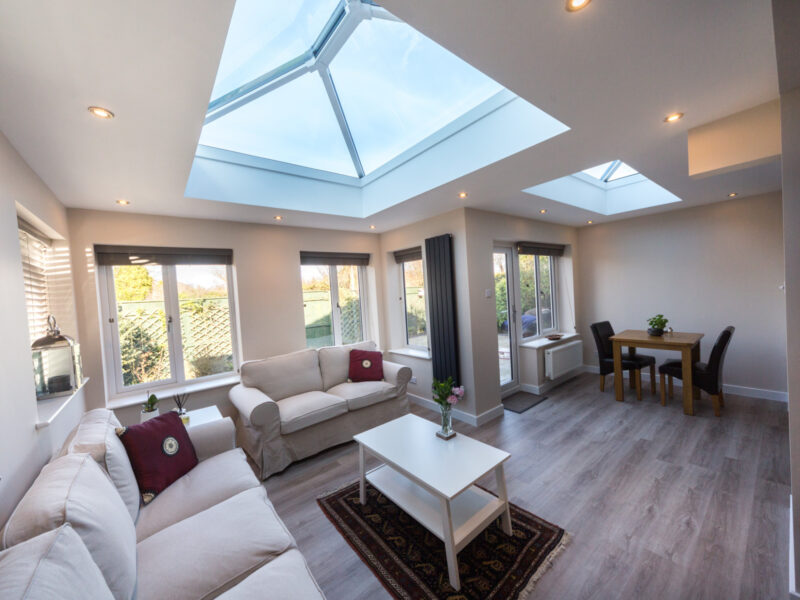 Architect Designed Living Spaces
Architect Designed Living Spaces
 Finance Options Available
Finance Options Available




